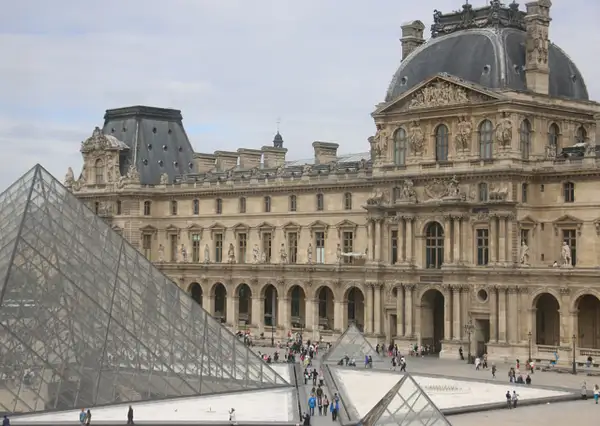


Detail-The Coronation of Napoleon |
Detail-The Coronation of Napoleon |
Grande Odalisque (1814) by Ingres
Grande Odalisque is an oil painting of 1814 by Jean Auguste Dominique Ingres depicting an odalisque, or concubine. Ingres' contemporaries considered the work to signify Ingres' break from Neoclassicism, indicating a shift toward exotic Romanticism. Grande Odalisque attracted wide criticism when it was first shown. It has been especially noted for the elongated proportions and lack of anatomical realism. The work is displayed in the Louvre, Paris.
|
Young Christian Martyr by Paul Delaroche |
The Charging Chasseur (1812) by Theodore Gericault
The Charging Chasseur, or An Officer of the Imperial Horse Guards Charging is an oil painting on canvas of about 1812 by the French painter Théodore Géricault, portraying a mounted Napoleonic cavalry officer who is ready to attack. The painting represents French romanticism and has a motif similar to Jacques-Louis David's Napoleon Crossing the Alps, but non-classical characteristics of the picture include its dramatic diagonal arrangement and vigorous paint handling. In The Charging Chasseur, the horse appears to be rearing away from an unseen attacker. The painting was Géricault's first exhibited work. Géricault would continue to move away from classicism, as exemplified in his masterpiece The Raft of the Medusa (1818–19).
|
Liberty Leading the People (1830) by Eugene Delacroix
Liberty Leading the People is a painting by Eugène Delacroix commemorating the July Revolution of 1830, which toppled King Charles X of France. A woman personifying the concept and the goddess of Liberty leads the people forward over the bodies of the fallen, holding the flag of the French Revolution – the tricolour flag, which remains France's national flag – in one hand and brandishing a bayonetted musket with the other. The figure of Liberty is also viewed as a symbol of France and the French Republic known as Marianne.
|
Napoleon Crosses the Alps-1848 by Paul Delaroche |
Exiting the Louvre |
An Azerbaijani craftsman in Paris |
An Azerbaijani merchant in Paris |
An Azerbaijani beauty at an Azerbaijan exhibit near the Palais Royal |
An Azerbaijani beauty in Paris |
Conseil d'Etat in the Palais-Royal
In France, the Council of State (French: Conseil d'État ) is a body of the French national government that acts both as legal adviser of the executive branch and as the supreme court for administrative justice. Established in 1799 by Napoléon Bonaparte as a successor to the King's Council (Conseil du Roi), it is located in the Palais-Royal in Paris and is primarily made up of top-level legal officers. The Vice President of the Council of State is the highest-ranking civil servant in France.The Conseil d'État, which is also a Grand Corps of the French State (grand corps de l'État), mainly recruits among the top ranking students graduating from the École nationale d'administration.
|
Palais Royal
The Palais-Royal, originally called the Palais-Cardinal, is a palace located in the 1st arrondissement of Paris. The screened entrance court faces the Place du Palais-Royal, opposite the Louvre. The larger inner courtyard, the Cour d'Honneur, has since 1986 contained Daniel Buren's site-specific art piece Les Deux Plateaux, known as Les Colonnes de Buren. In 1830 the Cour d'Honneur was enclosed to the north by what was probably the most famous of Paris's covered arcades, the Galerie d'Orléans. Demolished in the 1930s, its flanking rows of columns still stand between the Cour d'Honneur and the popular Palais-Royal Gardens.
|
Palais Royal |